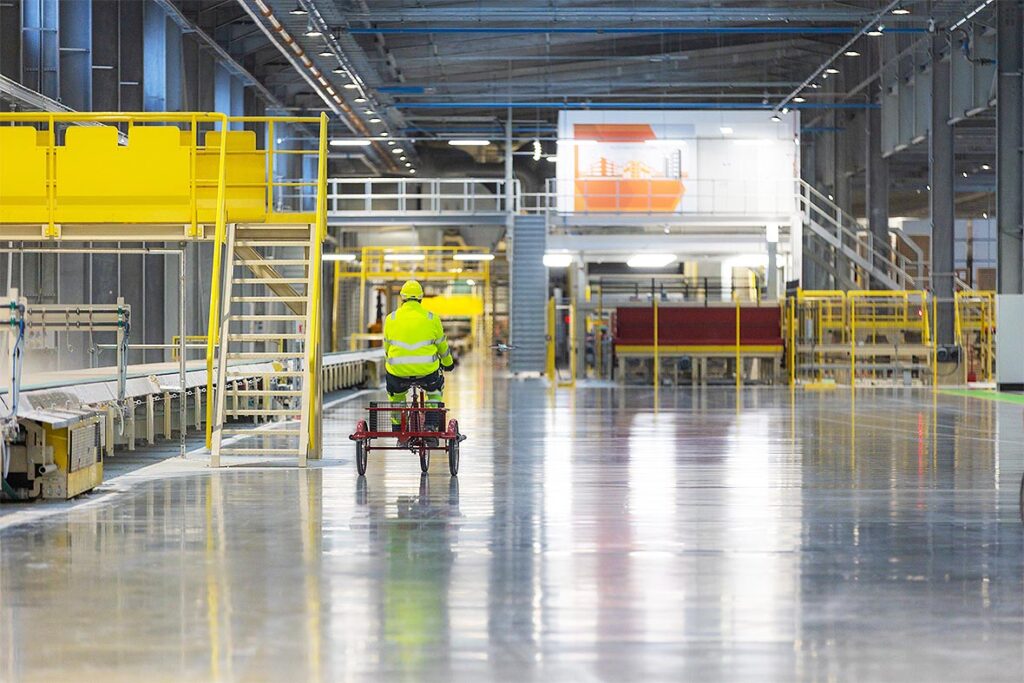The construction sector has seen a shift change towards more sustainable practices in support of the drive towards net zero, with embodied carbon being a key focus to date. However, is it time for a wider focus to achieve lasting change and deliver greater customer value?
 Oliver Cripps, Head of Sustainability Siniat
Oliver Cripps, Head of Sustainability Siniat
Here Oliver Cripps, Head of Sustainability at drywall manufacturer Siniat – part of the Etex group, argues that a more holistic approach is needed from construction manufacturers to ensure the needs of the market are being met.
Measuring embodied carbon has been a central focus to demonstrate a commitment to more sustainable practices and has played a successful part in helping to drive down emissions, however, there is still a need to consider the bigger picture when improving sustainability in the built environment.
The need for actions to speak louder than words in demonstrating a commitment to sustainability has seen a push to evidence operational and supply chain emissions through intensive data collation by manufacturers most often displayed in EPDs – Siniat already offers this for 85% of sold products.
This, in turn, has driven verifiable targets related to sustainability across the sector – and has been a great way to evidence change and a commitment to supporting sustainability. However, while this data-driven approach has delivered a solid foundation for change, now is the time for a more holistic view to ensure that change is sustainable, meaningful and meets the needs of customers.
Many manufacturers have taken action to tackle energy emissions in their own operations amid an intensive focus on the reduction of levels of embodied carbon. Leading manufacturers, such as Siniat, have done this through extensive bench-marking exercises to track the levels of embodied carbon that pull into their products through the raw materials used, the manufacturing process, and transportation, right through to end-of-life disposal and recycling. Success on an operational level can clearly be evidenced through a reduction in Scope 1 and 2 carbon emissions.
Data-driven comfort zone
However, the clear pathway to demonstrate progress in reducing carbon emissions that this offers has arguably led to data-driven KPIs becoming a comfort zone, when instead what the industry needs is to take a more holistic approach that considers a wider range of issues – with more specialist data required to support that.
Manufacturer KPIs do not always translate into what the customer is looking for, from an environmental as well as value point of view. Sustainability is far wider than embodied carbon, waste and recyclability, and it is time to focus more intently on the wider issue.
Companies across the industry are looking to meet their wider ESG criteria, including social value objectives, and will be looking to the supply chain to support this, and in turn their own clients’ requirements. In effect, while the focus is becoming broader, sustainability data is becoming more specialist, with reporting required on a more granular level for carbon, social value, biodiversity net gain and sustainable sourcing governance, for example.
As manufacturers we need to recognise this need for a broader take on sustainability-led principles and be prepared to show how we meet these in our own operations, and how we can support the supply chain.
Balanced approach
This includes presenting balanced and honest facts. For example, recycling is an essential part of any sustainability policy, but material recovery can be energy intensive; at times negating the impact on carbon emissions overall.
We have seen this at Siniat where recycled material has a higher moisture content level, which requires the use of more energy to drive that moisture out. This means we must work harder to bring down carbon emissions throughout the process.
Where this is the case it should be transparently set out and may require a greater effort to drive down carbon emissions elsewhere to mitigate this. Recycling, of course, is still vital to support circularity to reduce reliance on raw materials.
It is about being an informed customer, understanding that balance, and making a decision based on transparent evidence you can fully believe. This translates to the construction sector too.
A key part of Siniat’s plan to tackle embodied carbon is through more efficient production. The company is in the fortunate position where we have been able to make a large investment in a new, sustainability-led production facility. This board line will have a significant impact on carbon emissions and bring levels down significantly through the introduction of the latest, highly efficient machinery and more efficient processes.

Commitment to lower carbon
While we expect to see a substantial reduction in carbon emissions, the recent opening means the data will need to wait a little longer to demonstrate this on a consistent, month-by-month basis, however we are confident this will drive large scale operational efficiencies. The new plant has also allowed us to retire some of the older equipment that had a higher carbon intensity. The capacity also means that 98 per cent of Siniat board is now made in the UK, further supporting carbon reductions.
At a 12-month point we will be able to accurately analyse carbon savings that can then be fed into the product EPDS.
It is clear, and to be expected, that businesses and their customers have different priorities and motivations when it comes to ESG commitments, including the need for continuity, demonstrating low financial risk, attracting and retaining talent as a responsible employer.
However, there is currently no consensus on how to measure and reward wider holistic performance in the supply chain. While some models have emerged, at a corporate level there is currently not a scope 3 for diversity or social value for example.
It is time now to match that demand, and need, for a clearer focus with extended reporting. For example, water conservation, biodiversity, community engagement, and a transparent commitment to equality.
At Siniat, for example, under Etex’ Road to Sustainability 2030, we have set out clear targets for reducing our freshwater withdrawal by 20%. Supporting this pledge we have installed a rainwater collection system as part of the new board line.
We have also encouraged members of the team to volunteer in the community, and have set out an increased focus on Diversity, Equality and Inclusion. We have introduced biodiversity management at all our sites and Etex is a member of the EU business and biodiversity platform, which aims to integrate biodiversity into our business decisions.
This is indicative of the wider, holistic focus that needs to be seen in sustainability – and that meets the wider requirements of customers. This is likely to be factored into reporting more and more.
This will work hand-in-hand with need to clearly demonstrate carbon emissions, so while manufacturers measure their operational KPIs, such as energy intensity, customers will continue to demand an embodied carbon value expressed in an EPD. This is how different metrics can be made relevant to customers – and used to support their own sustainability targets.
Moving forwards, advancements in lowering the levels of embodied carbon will remain vital but it is important that this is part of a bigger picture that also looks at the social value firms deliver and their commitment to reducing waste and supporting biodiversity as part of a wide-reaching view of sustainability.